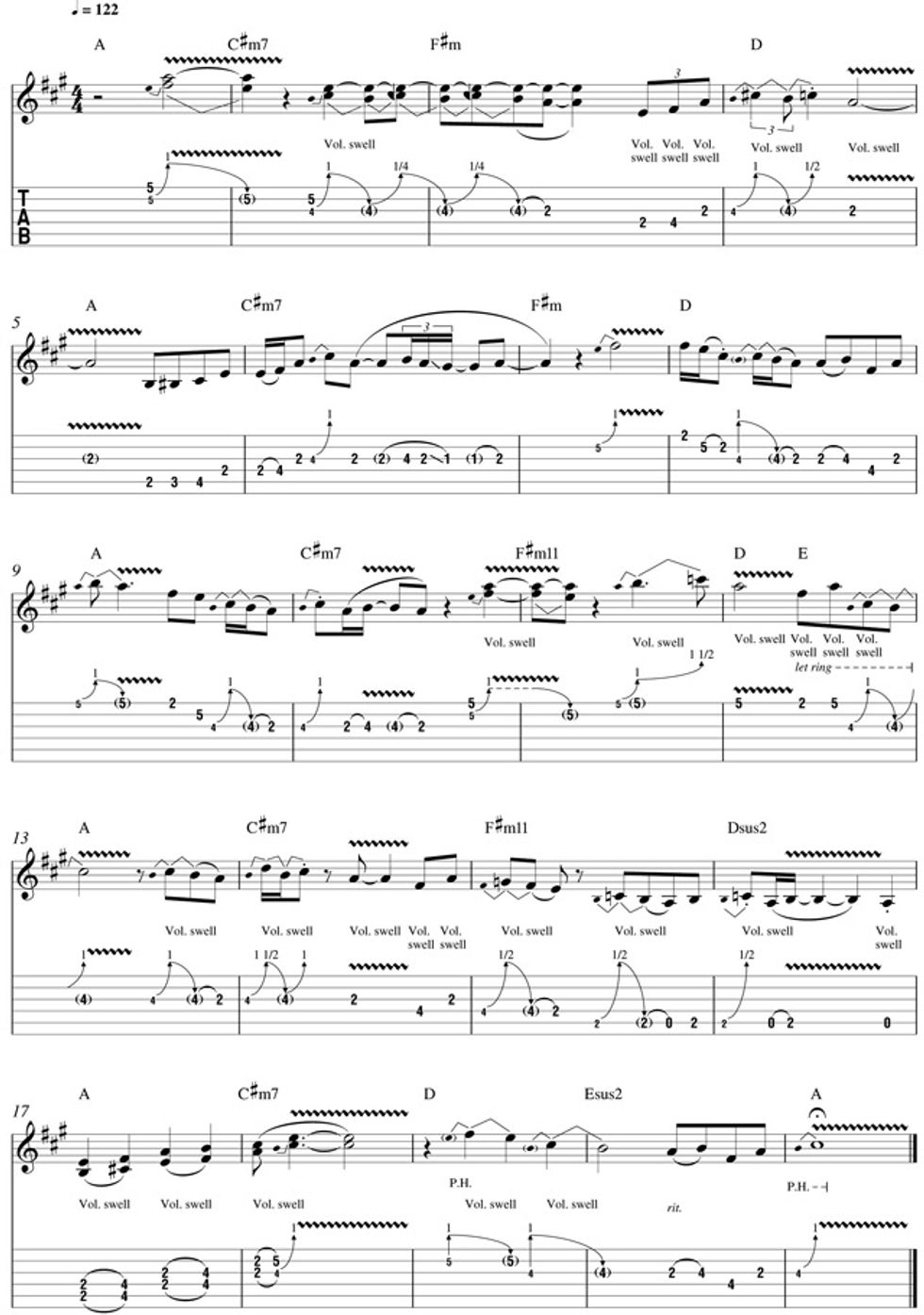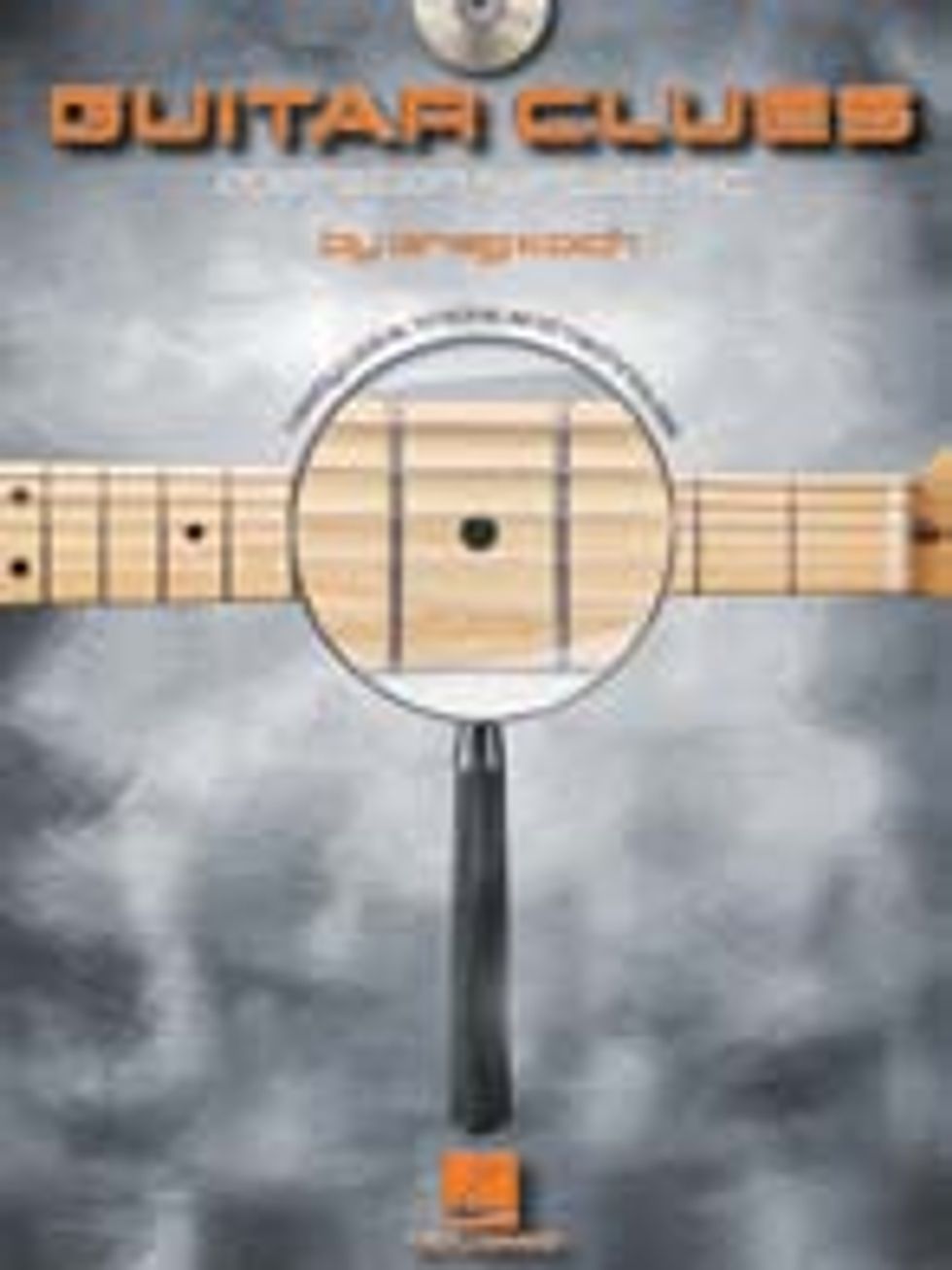Using volume swells and some bending, you can approximate the sound of a pedal steel guitar. These pedal-steel licks
usually incorporate bending a string while fingering another to get a unique double-stop sound.
The late Clarence White from the country-flavored rock band the Byrds helped develop a device for his Telecaster called
a B-Bender. This device raises the B string up a whole step (usually) so that you can apply precise bends to a note within
a chord or double stop, like a pedal steel guitar. Jimmy Page also championed the B-Bender on the Zeppelin record In
Through the Out Door and with his 1980s aggregation called the Firm. The B-Bender is activated by pulling down the
neck slightly, which brings the strap button closest to the neck up, thereby raising the pitch via an elaborate series of
springs and levers inside the guitar body.
Another implement called the Hipshot raises the pitch of the B string via a bar that hangs down off the guitar next to
your hip that you apply pressure to. Will Ray from the Tele-mauling Hellecasters has mastered this approach.
Having described all these gadgets, let me say you can sound like a pedal steel guitar with your bare hands as well!
Check out this exercise. With the volume turned down, pluck the two notes of a double-stop. Then turn the volume up as
you bend the lower note. Also practice it the other way: with the volume down, pre-bend the lower note and pluck both
strings. Just as you turn the volume up (or a little later) release the bent string.
Pedal Steel Excercise - Download Example Audio
Steelin’ Swells
As you might guess from the title of this tune, it has a healthy dose of volume swells and pedal-steel licks. Some of these
bends and vibratos are not easy but by giving the track a good listen, you should be able to approximate them.
I am using the notes of the A major pentatonic scale, but sometimes I throw in the major 7th (G#) which is not in the
pentatonic scale. What can I say? I couldn’t resist. And it’s not really naughty, because this note is found in the complete
major scale, of which major pentatonic can be considered a subset.
Download Example Audio
This lesson is from:
Guitar Clues: Operation Pentatonic
Search
Latest Stories
Start your day right!
Get latest updates and insights delivered to your inbox.
Premier Guitar features affiliate links to help support our content. We may earn a commission on any affiliated purchases.
The Latest
More for you
Most Popular
Don’t Miss Out
Get the latest updates and insights delivered to your inbox.




















